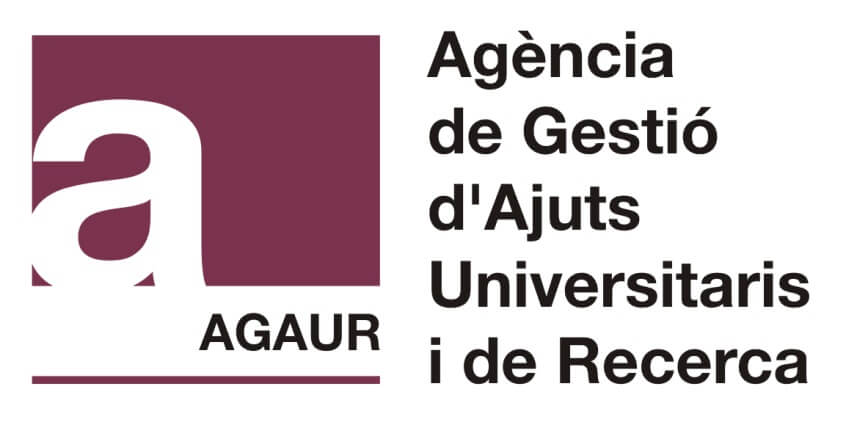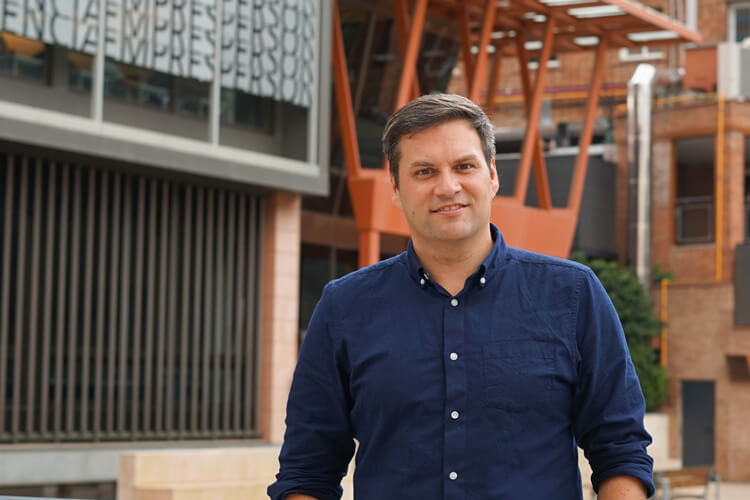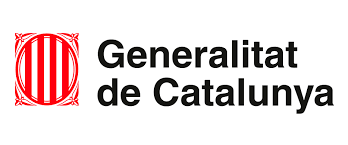Interview with Dr Javier Fernández, IQS Professor and Researcher
CO₂ emissions are one of the biggest environmental problems our society faces, and they are continuing to increase day by day and are reaching new emission level records. Many research strategies are being launched with the aim of reducing emissions and addressing this climate challenge.
Within the GESPA group (Environmental Process Engineering and Simulation Group) at IQS, Dr Javier Fernández García is leading the RFC + PU (Integrated Radiofrequency heated CO₂ captured and Plasma Utilisation) project, which seeks to develop the potential of radiofrequency heating and apply this technology to the intensification and improvement of sorption/desorption cycles for capturing CO₂ and the subsequent conversion and use of the gas obtained as a raw material in plasma reactors. To aid in carrying out this project, Dr Fernández García has earned one of the prestigious Beatriu de Pinós Grants from the Government of Catalonia, awarded through the Agency for the Management of University and Research Grants (AGAUR).
Javier, you’ve always had an interest in issues related to engineering and climate change, right?
That’s right. I arrived at the IQS GESPA group in academic year 2021-22. Previously, my doctorate at the University of Oviedo addressed treating emissions from the coal mining sector. It entailed a European project in which several universities and companies from different countries collaborated, focused mainly on issues of catalysis, reactors, energy balances, and reducing emissions – all related to climate change. When I finished my doctoral thesis in 2014, I decided to continue with my research and went to England as a postdoctoral student. I spent time in Warwick, Leeds, and University College London, where I worked on research lines related to process integration and, above all, the use of a new technology: induction heating or radiofrequency, which I would now like to transfer to different applications.
Then I joined IQS in 2021, where I now work with several research groups: the GESPA group, where I aim to implement this radiofrequency heating technology in different applications, such as capturing and converting CO₂, but also in Flow Chem areas with the GQF and Crisol groups, where I would like to integrate the same technology in other areas such as homogeneous and heterogeneous reactions, the synthesis of pharmaceutical products, and the use of catalysts for continuous multiphase reactions.
Could you explain what this radiofrequency heating technology consists of?
The induction or radiofrequency heating system is based on having a magnetic material that releases heat by the Joule effect when it is inside an alternating magnetic field. The heat released by this material can be used as a heat source in the unit that requires it.
It involves a heating system with high efficiency and, based on previous energy balances, it could be coupled with renewable energy sources. Therefore, it has the potential for multiple applications such as integrating it in reaction engineering, in combined reaction and separation processes, or in water and gas treatments. Overall, the technology considers aspects of climate change, energy savings, and resource optimization.
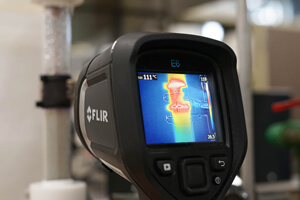
The RFC+PU project is based on capturing CO₂ through temperature change capture cycles known as Temperature Swing Adsorption (TSA). These capture cycles consist of low-temperature gas adsorption and high-temperature desorption, depending on the conditions used in the process. The idea within this project is to optimize cycles through the use of materials specifically designed for this application (tailored materials) and to be able to capture and reuse this CO₂ so that the climate and energy impact of the process can be reduced. Then we will convert it all into a circular economy system: the CO₂ that comes from a combustor is converted back into a fuel or another raw material, thus completing the circle.
First of all, we must select the materials that we will use in the adsorption-desorption columns. Until now, materials such as calcium oxide were used in calcium looping, but they require very high temperatures in both cycles (600 °C for adsorption and 850 °C for desorption). Therefore, we must look for and test other materials that are more flexible and have lower energy costs, such as zeolites and Metal Organic Frameworks (MOFs). These are innovative materials with high CO₂ adsorption capacity and they can work in lower temperature conditions, thus having a much lower energy impact on the entire process.
“We will develop advanced materials that are capable of combining the magnetic support or heat source with the CO₂ capture adsorbent material”
This is one of the objectives of the project: to develop these advanced materials, both for capture and conversion, which can combine the heat source with the sorbent material no matter what it is (zeolites or MOFs). The radiofrequency generator consists of a coil inside which the new adsorbent material will be arranged, and it will have a dual function: it will be able to generate heat, and that will be the heat source itself, and capture CO₂ at the same time. Therefore, we have the opportunity to evaluate different advanced materials to characterize them and be able to define the overall operation of the process – the amount of gas that is recovered, the purity of the recovered gas, and so on – for each of them, all in the capture cycles that are established.
“The use of these advanced materials with a dual function will enable us to work in much more favourable operating conditions from a process and environmental point of view”
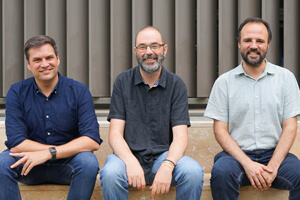
Absolutely! At IQS I have collaborated with other researchers from the GESPA group such as Dr Rafael González Olmos, on the topics of radiofrequency and CO₂ capture, and Dr J. Oriol Pou, on converting captured gas through the plasma reactor. I have also worked with the company GasN2 as they are experts in CO₂ capture and reuse through PSA. Finally, I have also collaborated with Dr Kwang Choy from University College London, who is an expert in the manufacture and synthesis of advanced materials.
We discussed capture technology. But once CO₂ is desorbed, what is the proposal for its reuse?
This is another one of the objectives in the project: the use/conversion of recovered gas. At the IQS GESPA group, we have a dielectric barrier discharge plasma reactor (DBD) in which the conversion and selectivity of the reaction will be optimized to study different CO₂ transformation schemes aimed at other value-added products. This type of reactor could also be coupled with renewable energy sources like Dr J. Oriol Pou has already shown.
“Once the captured CO₂ is recovered, we will use it as a raw material for conversion into other value-added products, in a plasma reactor”
By taking advantage of these IQS instruments, we will combine the radiofrequency capture system with the reuse of CO₂ desorbed in the DBD reactor to use it as a raw material in obtaining other products such as methane, methanol, urea, and so on.
You earned a Beatriu de Pinós Grant to carry out the RFC+PU project. What does this achievement mean to you?
It is a three-year grant, co-financed by the European Commission. It is a very competitive grant that has been especially designed to bring talented researchers who have studied and worked abroad back to Spain. The grant is giving me the opportunity to be able to bring an innovative heating system to IQS, previously developed for catalysis, reactions, and gas capture with high temperature adsorbents, and to be able to develop and apply it now with new materials and in much more favourable environmental conditions. With this funding, we can create the seed to be able to move forward on projects with greater impact within green chemistry and actions to support reducing climate change. I’m really pleased!
RELATED PEOPLE:
Javier Fernández García, PhD
RESEARCH GROUP
Engineering and Simulation of Environmental Processes Group
RELATED PROJECTS
RFC + PU (Integrated RadioFrequency heated CO2 Capture and Plasma Utilisation)
